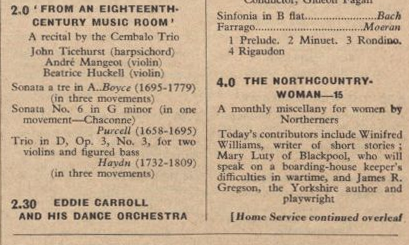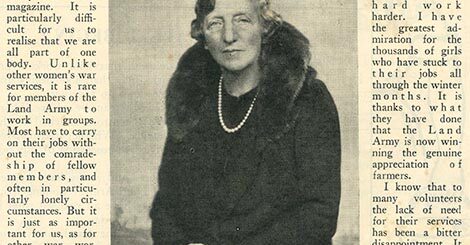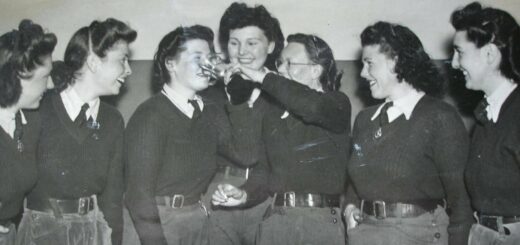Running the WLA: opportunities for development
Our final post of this 2019 monthly series looks at the opportunities for developing Land Girl’s agricultural skills. The WLA, in partnership with the government, developed ways to recognise the skills that women had gained through their wartime service. These training opportunities would then support women who wanted to stay in agriculture after the war was over.
Proficiency Tests
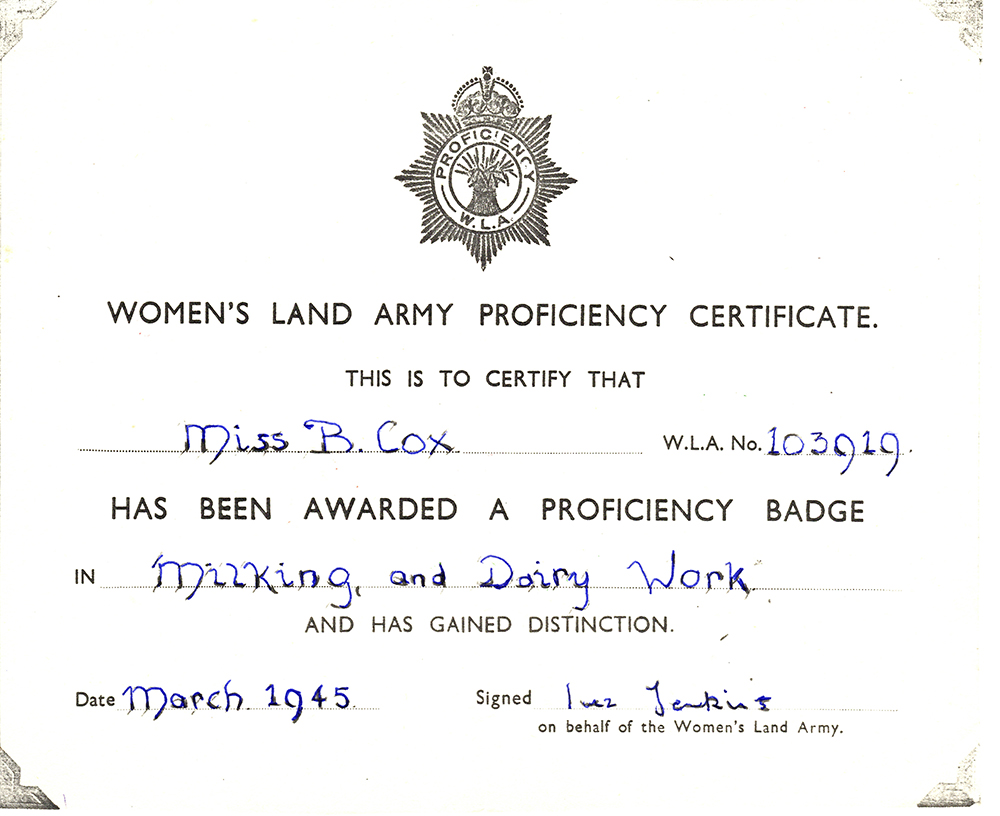
In 1943, the WLA set up proficiency tests. Women could take part in these tests if they had been a Land Girl for a year – and had a good record. They became a way for Land Girls to receive official recognition for their newly-acquired skills in:
- milking and dairy work
- general farmwork
- tractor driving
- poultry
- pest destruction
- outdoor garden and glasshouse work
- fruit work
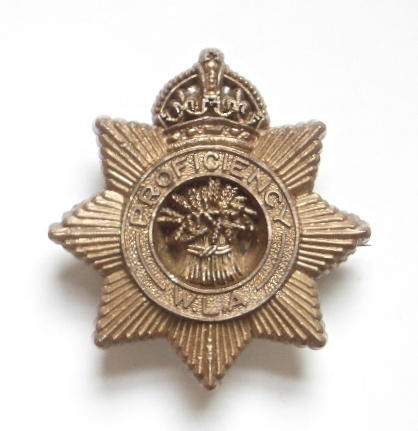
According to Land Girl Irene Grimwood, the General Farming Proficiency Test tested women on their ability to pull and top two rows of sugar beet, whether they could spread two rows of manure, and identify plants and weeds. Alongside this practical assessment, Land Girls also had to answer a set of oral questions related to general farmwork. They not only needed to show that they had the practical skills, but also the general knowledge behind them, so they understood why they were carrying out certain farm tasks.
If a Land Girl received over 75% in a proficiency test, they received a badge and a certificate. They would also have the accolade of their name being printed in the pages of The Land Girl magazine. The publication of these results also encouraged healthy competition so that other women might feel compelled to work harder – and get their newly acquired skills recognised. With proficiency tests behind them, Land Girls were in a stronger position should they wish to pursue a career in agriculture after the war.
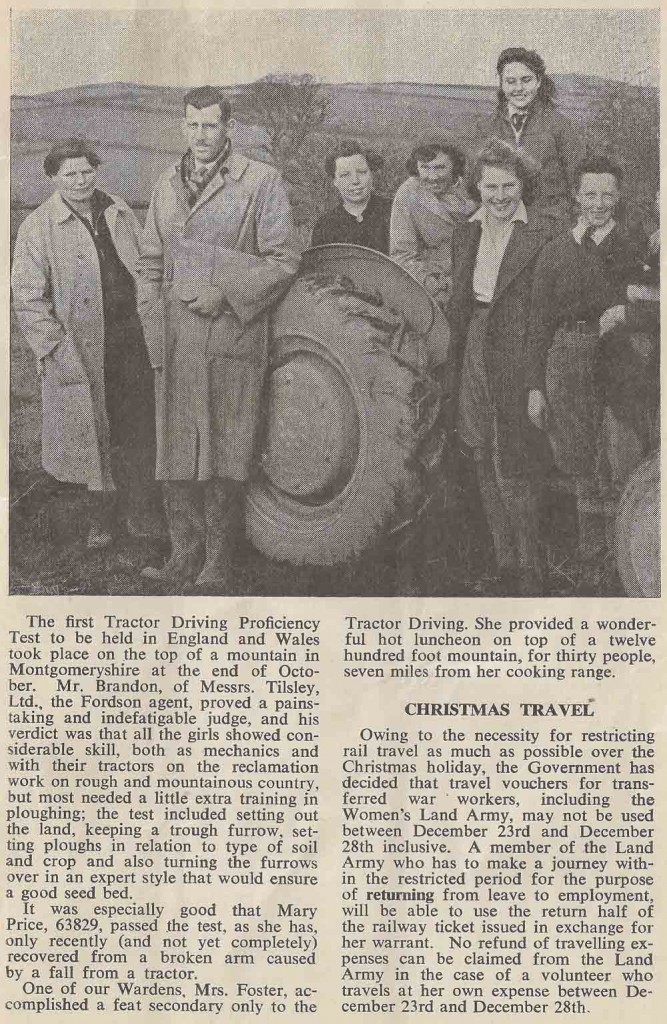
Correspondence Courses
If Land Girls were keen to advance their agricultural knowledge further, then they could enrol in a Correspondence Course in Agriculture or Horticulture. These courses was administered by the College of Estate Management and the Royal Horticultural Society. In 1943, over 1,270 Land Girls did this; 630 signed up to Agriculture courses and 630 to the Horticulture ones. These courses allowed women to combine their practical experience with a sound theoretical knowledge.
Papers on different aspects of either agriculture or horticulture were sent out to enrolled women every fortnight. Once they had responded to the questions, they’d post these back to a tutor, who would add their comments, before the answers landed back on the doormat of the Land Girl in question, so land Girls could read the feedback. There were 9 papers for each course. If a Land Girl enrolled on the Agriculture course, then she’d look at the following:
- The plant
- The soil
- Grassland
- Tillage
- Arable crops
- The animal
- Dairy farming
- Calf rearing, animal health & diseases
- The farm horse
Vita Sackville-West, who wrote the first history of the WLA, was particularly proud of the agricultural opportunities given to women who were keen to stay on the land after the war. She writes:
No Land Girl […] has any right to complain that she hasn’t been given the chance to equip herself with an enlarged knowledge.
The Women’s Land Army, 1944
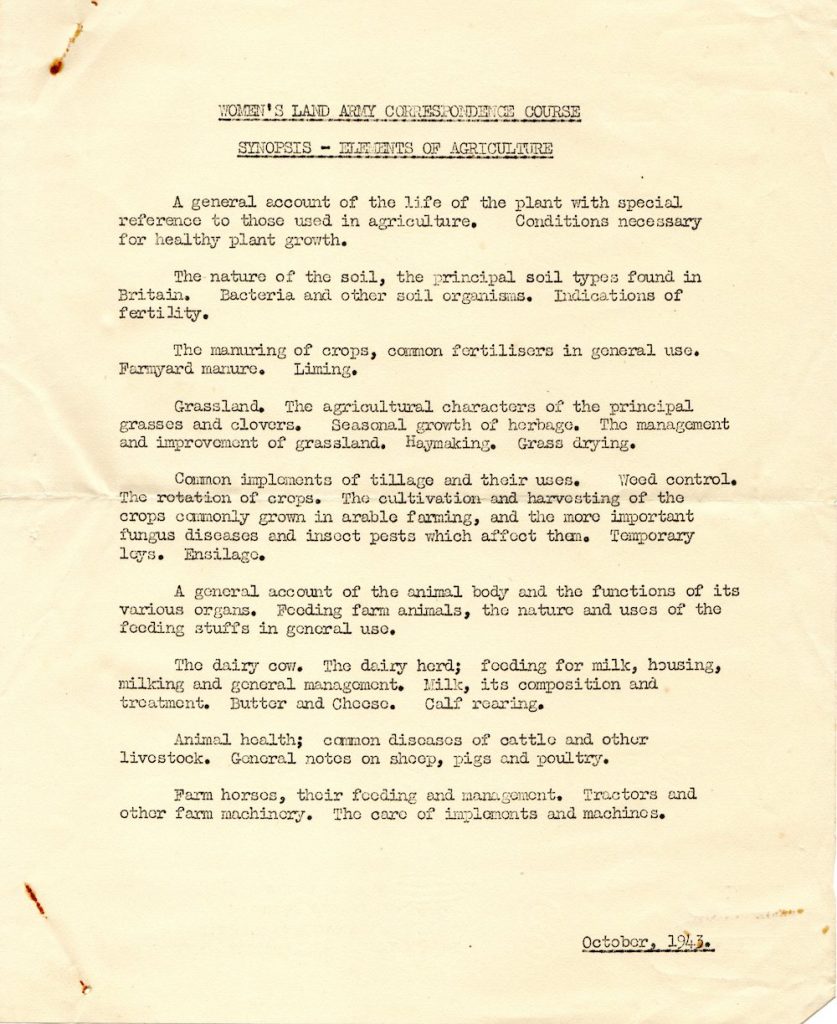
Source: Catherine Procter
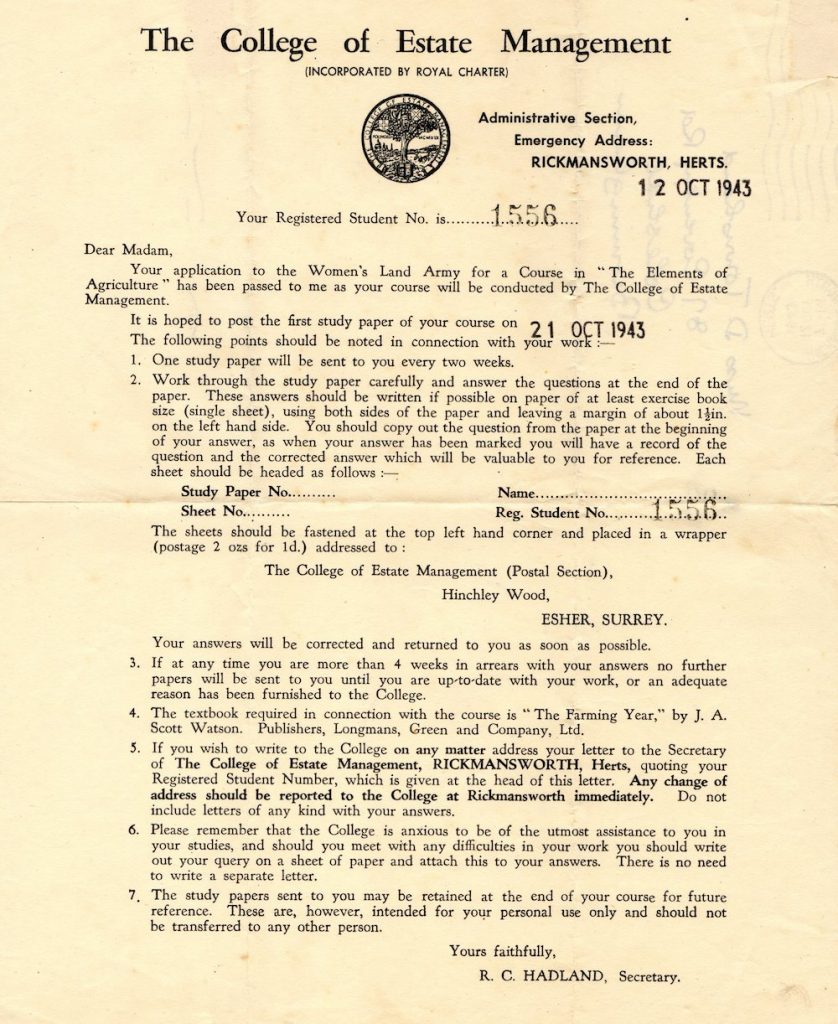
Source: Catherine Procter
Find out more
Irene Grimwood, Land Girls at the Old Rectory (Ipswich: Old Pond Publishing, 2000).
Vita Sackville-West, The Women’s Land Army (London: M. Joseph, 1944), pp.91-94.
